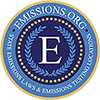Last updated on September 22nd, 2023
 The Environmental Protection Agency (“EPA”) recently released stricter guidelines to automakers on fuel economy testing. This came about because of last fall’s investigation of Hyundai and Kia’s inflated fuel economy in its cars. The said investigation resulted in a combined $300 million fine from this violation. To date, this has been the largest penalty for violation of the Clean Air Act.
The Environmental Protection Agency (“EPA”) recently released stricter guidelines to automakers on fuel economy testing. This came about because of last fall’s investigation of Hyundai and Kia’s inflated fuel economy in its cars. The said investigation resulted in a combined $300 million fine from this violation. To date, this has been the largest penalty for violation of the Clean Air Act.
Under the current rules, the automakers conduct the mileage testing themselves and the EPA provides oversight through audits and testing of the automaker’s vehicles. This shall still be the case even with the new guidance. However, the new guidance is more prescriptive with the procedures and is more reflective of real-world conditions.
Purpose of the New Guidance
The EPA believes that the guidance will help car companies give more accurate fuel efficiency and greenhouse gas emissions figures when they market their cars. The EPA also believes that the new guidelines will result in a more accurate fuel economy numbers that customers can trust. Customers’ surveys show that customers felt misled by the advertised miles per gallon rating of their cars. Most often, the actual miles per gallon on their cars are in fact higher than advertised. Because of the prevalence of customer dissatisfaction and frustration, the government has determined to address these concerns, starting with this guidance.
The New Guidance
The EPA requires the automakers to emulate real-world conditions in their vehicle testing. The guidelines deal with how cars are prepared for testing and the speed used to test the impact of aerodynamic drag and rolling tire assistance.
Per the new guidance, the automakers are required to do the following in preparation for testing: (a) the test vehicle must have 4,000 miles on them; and (b) warm up the test vehicle for 30 minutes at 50 miles per hour.
The guidelines also require automakers to determine the impact on aerodynamic drag and tire rolling resistance of the test vehicle at 70 miles per hour. This is more reflective of real-world conditions compared to the current testing speed of 50 miles per hour. Current speed tests have resulted in a high fuel economy figure that is hugely optimistic compared to what really happens in the real world (where people drive at least 100 miles per hour).
These new guidelines, however, are only effective for the 2017 car models. The EPA advised the automakers that they would be using the new guidelines on testing of the car models next year. The EPA is also looking into issuing new guidance concerning fuel economy testing on hybrid vehicles in the next year or so.
In car purchasing, fuel economy figures are an increasingly important part of consumer decision-making. Therefore, the need for more accurate miles per gallon figure is more important than ever. The EPA has faced much criticism for its lack of hard and fast rules in fuel economy testing. However, these new guidelines are a step in the right direction. The EPA believes that issuing these guidelines gives them the flexibility to address any potential changes in technology, testing or any other unforeseen conditions.

No comment yet, add your voice below!